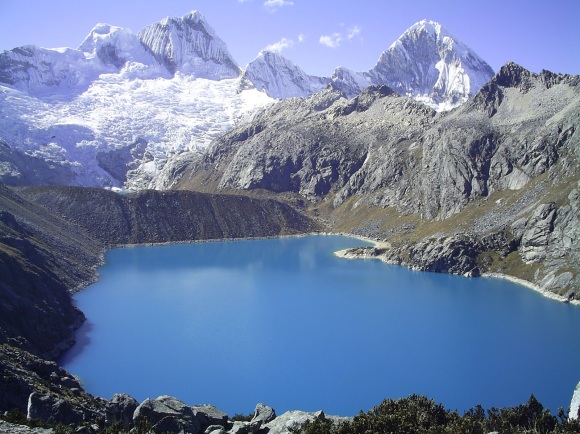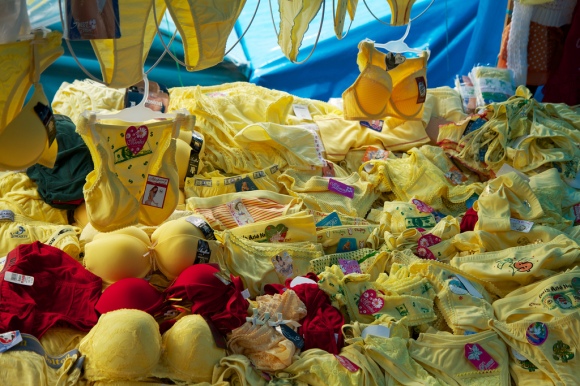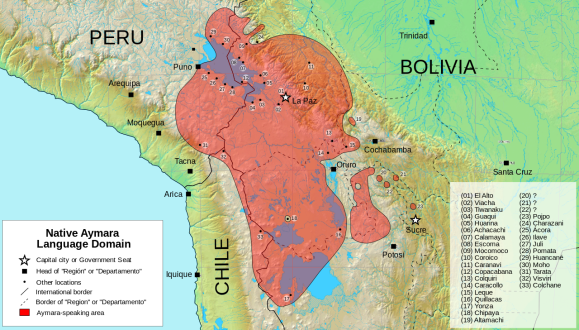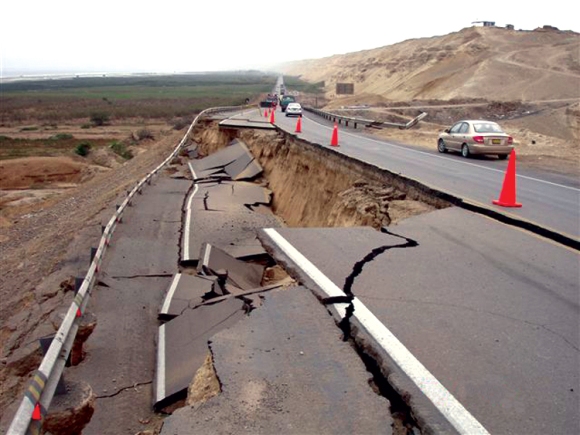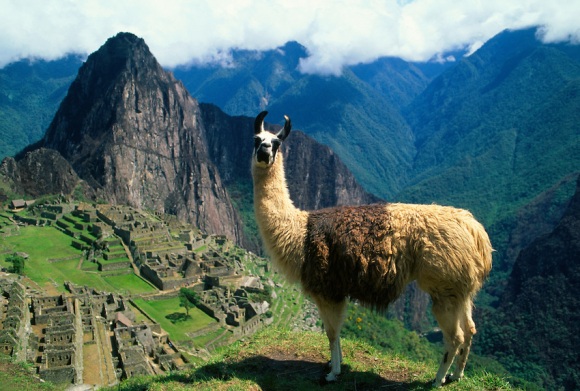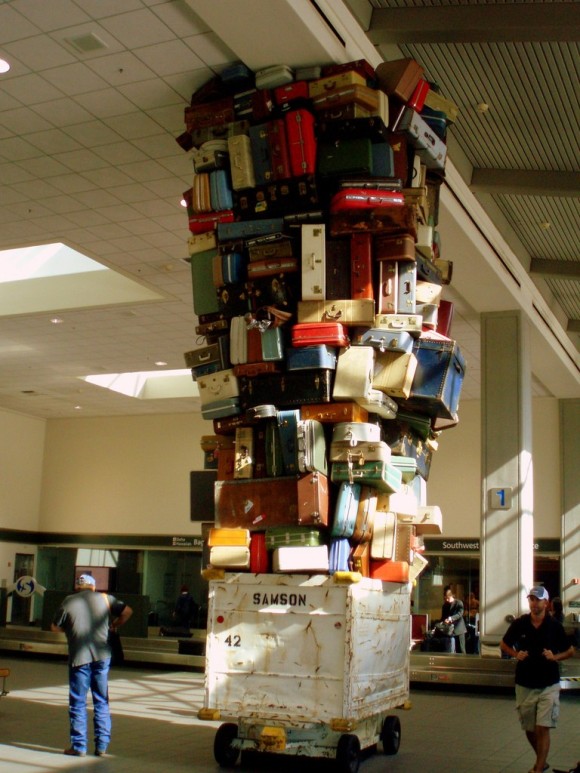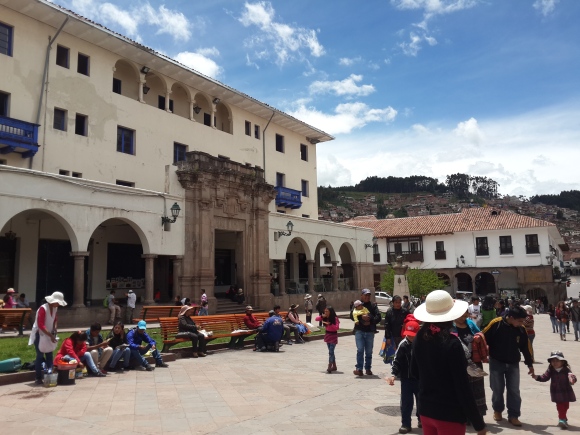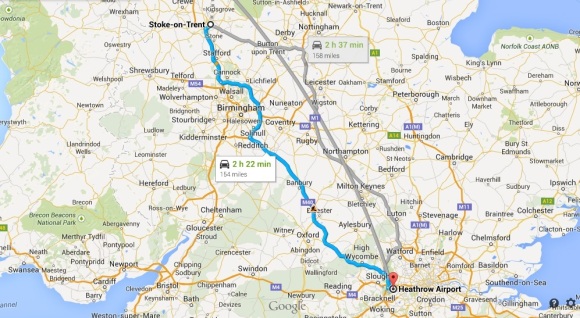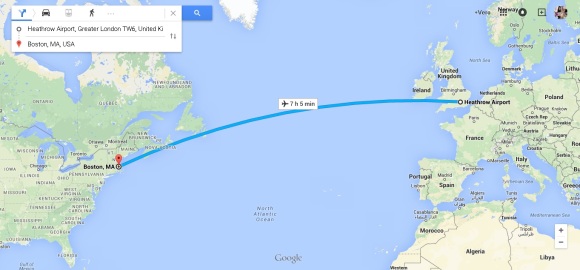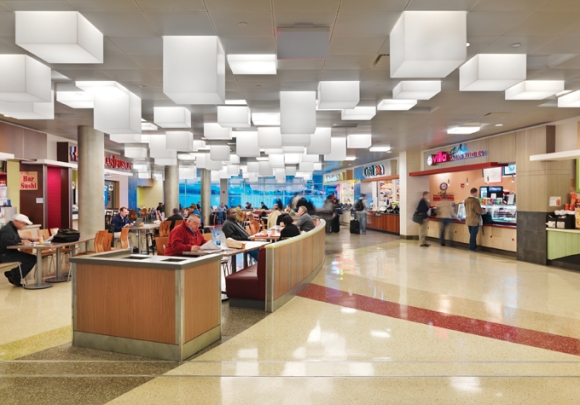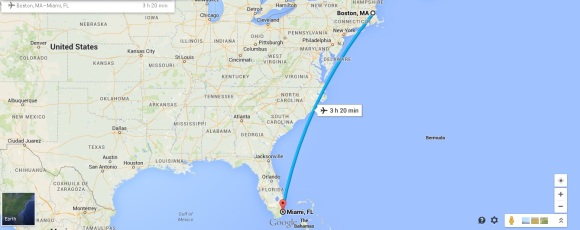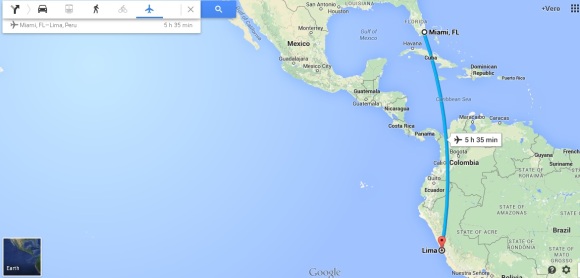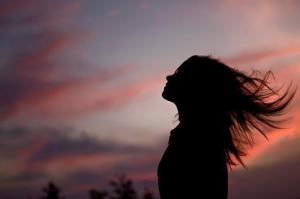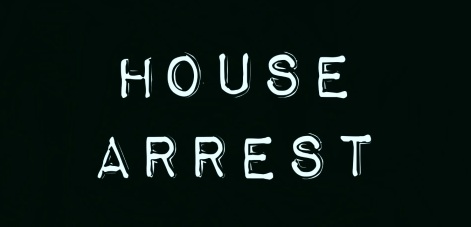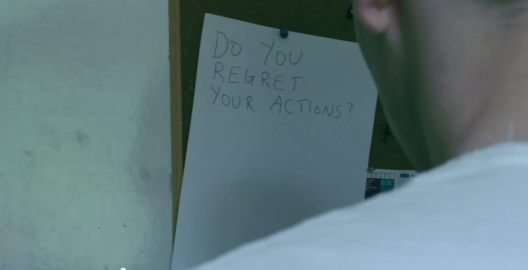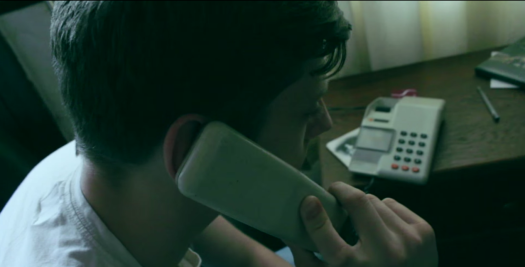Fascinating Facts about Peru
- The Inca civilization originated in 1200 B.C. in the Cuzco area of south-eastern Peru. The Incas lived in Peru until 1533.
- The famous Machu Picchu was the location of the Inca civilization. Machu Picchu is a world heritage today and also considered as one of the wonders of the world.
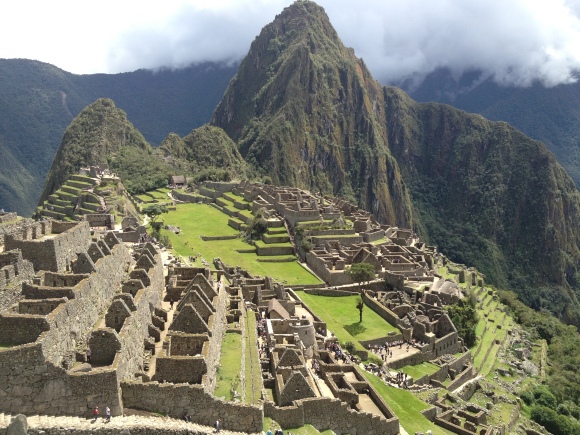
- And let’s not forget its sister: Choquequirao!
- Peru grows more than 55 varieties of corn, and you can just about find it in any color including blue, yellow, purple, white and black.
-
Monarchy existed in Peru during the Inca civilization (till 1532). In the same year the Inca Emperor was defeated and Peru became a colony of Spain
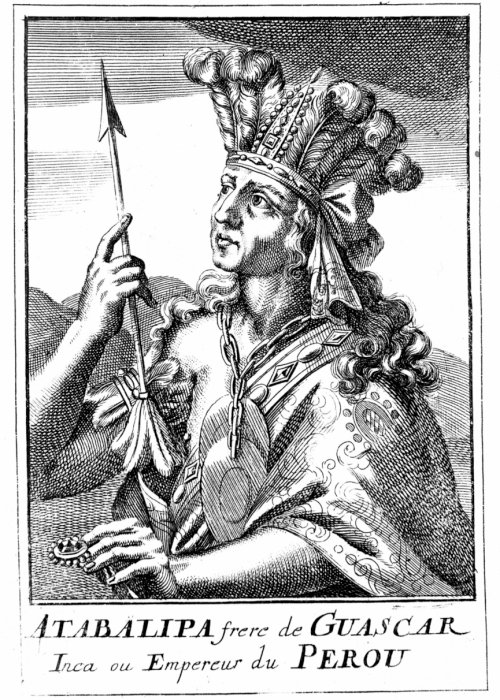
-
Peru was under Spanish rule for a long time and gained independence on 28th July 1821. However, it took nearly 3 years for Peru to get its recognition and it finally materialized on 9th December 1824.
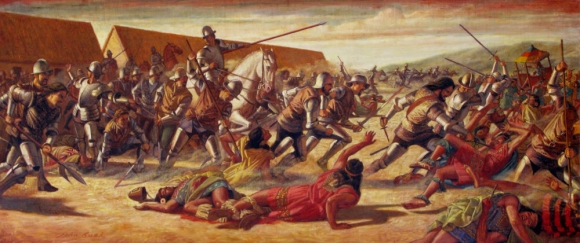
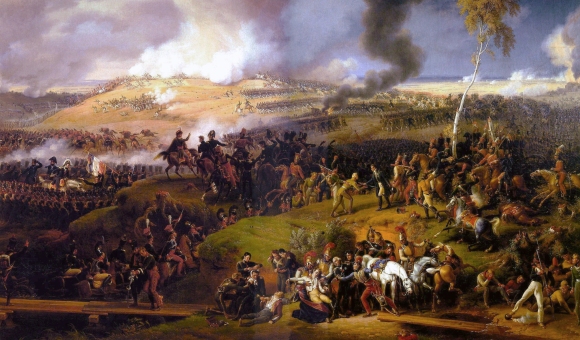
- The potato is originally from Peru, and there are over 3,000 different varieties. Proud Peruvians use the phrase “Soy mas Peruano que la papa” (I am more Peruvian than the potato).
- The finest cottons in the world, Pima and Tanguis are Peruvian.
-
Peru has diverse geographic conditions with tall mountains, extensive plains, and numerous beaches. Snow covered peak of Alpamayo in Peruvian Andes as well as Peruvian rainforest are found here. In fact. two-thirds of Peru is covered in prime Amazon Rain Forest.
- The oldest occupation of man in the America’s is traced back to the sacred City of Caral-Supe a few hours north of the capital Lima. The 626 hectare (1546 acre) site dates back 5000 years.

100330-N-4774B-129
CARAL, Peru (March 30, 2010) Sailors from the guided-missile cruiser USS Bunker Hill (CG 52) tour the ancient city of Caral, the oldest city in the western hemisphere, while on liberty during a port visit. Bunker Hill is supporting Southern Seas 2010, a U.S. Southern Command-directed operation that provides U.S. and international forces the opportunity to operate in a multi-national environment. (U.S. Navy photo by Mass Communication Specialist 2nd Class Daniel Barker/Released)
- The culture of Peru is dominated by Spanish and Indian American culture. The Peruvian cuisine and performing arts are based on these traditions; however, the arts and crafts have their roots in the Inca civilization.
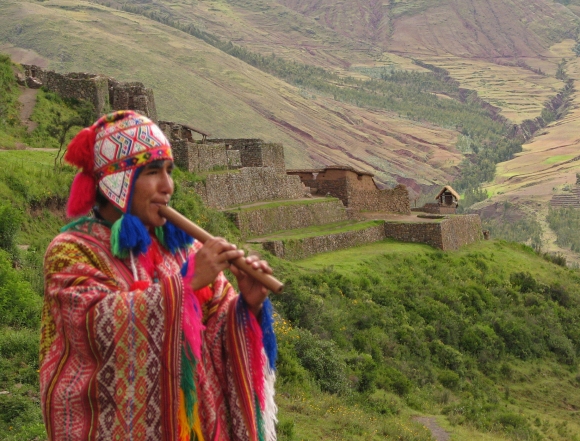
-
The presence of the mysterious Nazca lines is a fascinating aspect of this country. These drawings have been made thousands of years ago and the reason for that same is still unknown.
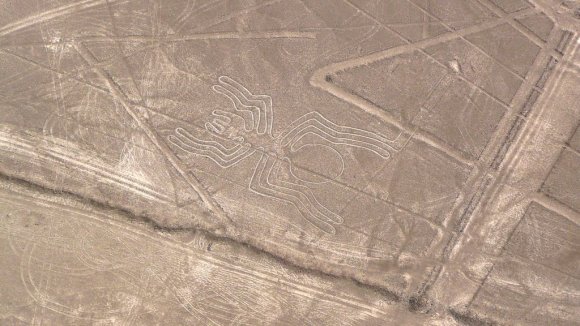
-
Ceviche and Pisco Sour are respectively the trademark dish and drink of Peruvian cuisine. Secondly, Lomo Saltado, Pachamanca are also famous dishes of Peru.
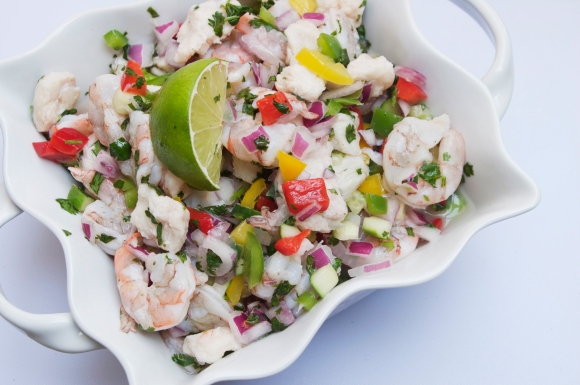
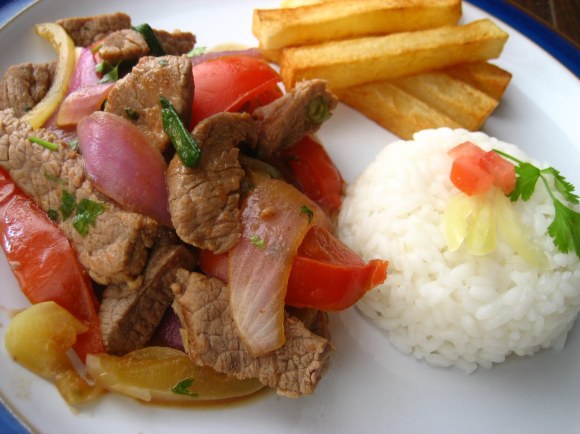
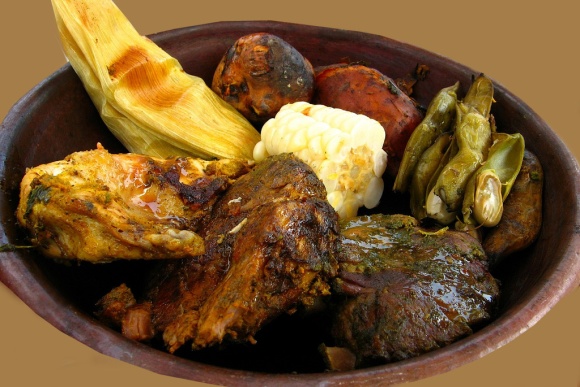
- The Pisco Sour is Peru’s national drink and is made using Pisco brandy, lemons, sugar water, egg whites, ice and finished with bitters.
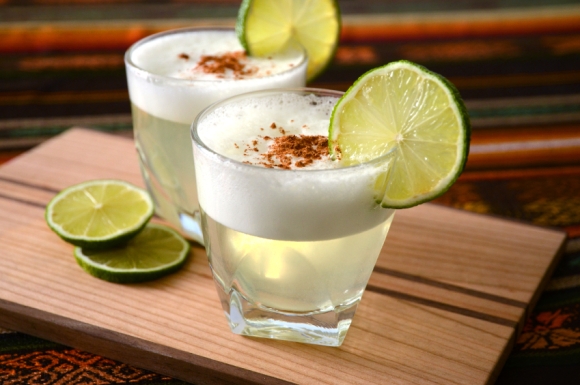
-
The largest lake in South America, Lake Titicaca, lies in Peru. It is also one of the highest navigable lakes in the world.
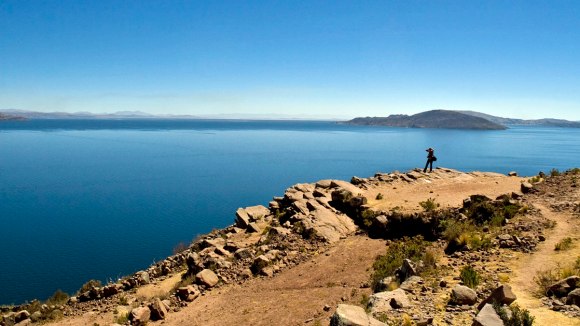
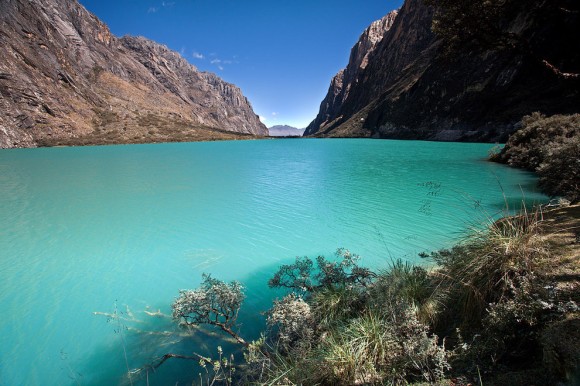
- In Peru, it is tradition to give friends and family yellow underpants on New Year’s Eve.
- Peru’s is the 8th largest producer of coffee in the world, and is the 5th largest producer of the Arabica bean.

- There are 3 official languages in Peru: Spanish, Quechua and Aymara, but east of the Andes in Amazon Jungle regions it is thought that natives speak a further 13 different languages.
- Peru is home to the highest sand dune in the world. Cerro Blanco located in the Sechura Desert near the Nazca Lines measures 3,860 feet (1,176 meters) from the base to the summit.
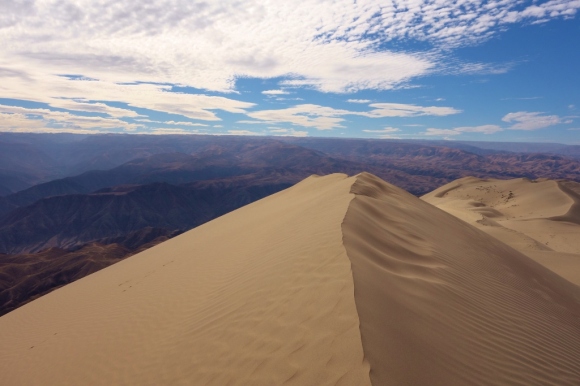
- Peru is a surfer’s paradise. Chicama has the world’s longest left-handed wave at 4km’s long, and Mancora (close by) has the world’s largest left-handed point-break.

- The average life expectancy in this country is 70 years. The percentage of poverty is 42%. Peru has a literate population above 90%, with an impressive schooling system and an equally national health care system. The pictures below highlight the huge differences in income across the country.

Poverty in Peru
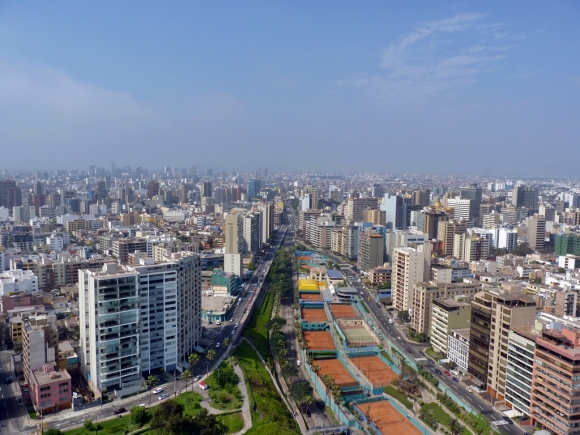
City of Lima
- It does not have a uniform climate and experiences 28 different distinct climates. Due to the location in the seismic zone, earthquakes are common occurrences.
There are about 1816 different species of birds, 3500 species of orchids and 3532 species of butterflies that can be seen in the Amazon Rainforest in Peru.
My Peruvian Travel List
If you read my previous blog you’ll see this month I’ll be travelling half way across the world to meet a special person in Peru for a month. Of course. such a travel requires adequate planning and sufficient resources to make the experience as enjoyable as possible.
If I have missed anything, or you’ll like to add other items the list, please comment below 🙂
Without further a-do, this is an approximation of my check-list:
Documents:
- No Visa required for UK citizen travelling to Peru
- Passport (Just renewed)
- Travel itinerary – I will be travelling (3 plane journey)
- Medical insurance card / documents
- Company business cards
- Address Book and Notepad (with stationary)
- Copies of all important documents – including card numbers & energy contact information – Copy for someone at home, copy for travelling and an e-copy (have sent a self-addressed email)
- Document folder/organizer to keep everything together!
First Aid :
I will be taking a first aid travel kit which includes: (Fairly affordable on Amazon/eBay)
- Ibuprofin / Paracetamol
- Antiseptic cream
- Gauze bandages
- Throat losenges
- Bandaids/plasters
- Vitamins
- First aid guide book
- Sterile Sponge Dressing
- Alcohol Pads
- Antiseptic Towelettes
- Butterfly Closures
- Cotton Tip Applicators
- Iodine Pad
- Etc
Toiletries:
- Shampoo & Conditioner
- Soap
- Styling Gel / Clay
- Comb
- Tooth Brush & Toothpaste
- Portable Carry-on Plane Tooth Brush & Tooth paste
- Deodorant
- Antiperspirant
- Shower gel
- Post Shave Balm
- Shaving Gel
- Razor & Electronic Razor
- Towel
Clothing:
- Long trousers / Jeans / 3/4 trousers & Shorts – Informal & Smart
- Short / Long Sleeve Shirts
- Underwear – Must stock up!
- Jacket
- Coat
- Sun hat
- Belts
- Pajamas
- Dressing Gown
- Winter clothing – (July to September is the winter season in Peru)
Footwear:
- Walking / Hiking Shoes
- Running / Exercising Trainers (I plan to visit the gym)
- Formal / Smart Shoes
- Comfortable socks – think & thin
Airplane Specific:
- Passport, Flight e-tickets, Travel Itinerary documents
- Travel Book (Will be reading The Chimp Paradox by Dr Steve Peters)
- Headphones
- A few Snacks
- Travel toiletries
- Neck Pillow
Other:
- Sunglasses
- Notebook & pen
- Guide Books and Spanish Dictionary
- Gifts
- Power adapter
- Portable charger
- Suitcase (Up to 23kg on AA 1PC)
- Hand-Luggage Bag
- Travel Document Holder
Top 50 Travelling Quotes of All Time
I will be travelling to Peru in July. If you are a traveler, or are planning on travelling, these quotes will be of inspiration.
50. Kilometers are shorter than miles. Save gas, take your next trip in kilometers.” – George Carlin
49. “Every perfect traveler always creates the country where he travels.” – Nikos Kazantzakis
48. “Our Nature lies in movement; complete calm is death.” – Blaise Pascal
47. “It is a strange thing to come home. While yet on the journey, you cannot at all realize how strange it will be.” – Selma Lagerlöf
46. “Remember that happiness is a way of travel – not a destination.” – Roy M. Goodman
45. “Clay lies still, but blood’s a rover / Breath’s aware that will not keep. / Up, lad: when the journey’s over there’ll be time enough to sleep.” – A. E. Housman
44. “As the traveler who has once been from home is wiser than he who has never left his own doorstep, so a knowledge of one other culture should sharpen our ability to scrutinize more steadily, to appreciate more lovingly, our own.” – Margaret Mead
43. “Too often. . .I would hear men boast of the miles covered that day, rarely of what they had seen.” – Louis L’Amour
42. “Stop worrying about the potholes in the road and celebrate the journey.” –Fitzhugh Mullan
41. “One main factor in the upward trend of animal life has been the power of wandering.” – Alfred North Whitehead
40. “The open road is a beckoning, a strangeness, a place where a man can lose himself.” – William Least Heat Moon
39. “Travel only with thy equals or thy betters; if there are none, travel alone.” –The Dhammapada
38. “Our deeds still travel with us from afar, and what we have been makes us what we are.” – George Eliot
37. “Worth seeing, yes; but not worth going to see.” – Samuel Johnson, on theGiant’s Causeway
36. “An involuntary return to the point of departure is, without doubt, the most disturbing of all journeys.” – Iain Sinclair
35. “Traveling is like flirting with life. It’s like saying, ‘I would stay and love you, but I have to go; this is my station.’” – Lisa St. Aubin de Teran
34. “Once in a while it really hits people that they don’t have to experience the world in the way they have been told to.” – Alan Keightley
33. “Half the fun of the travel is the aesthetic of lostness.” – Ray Bradbury
32. “Bizarre travel plans are dancing lessons from God.” – Kurt Vonnegut
31. “We wander for distraction, but we travel for fulfillment.” – Hilaire Belloc
30. “I haven’t been everywhere, but it’s on my list.” – Susan Sontag
29. “I should like to spend the whole of my life in traveling abroad, if I could anywhere borrow another life to spend afterwards at home.” – William Hazlitt
27. “A child on a farm sees a plane fly overhead and dreams of a faraway place. A traveler on the plane sees the farmhouse… and thinks of home.” – Carl Burns.
28. “I love to travel, but hate to arrive.” – Albert Einstein
26. “Don’t tell me how educated you are, tell me how much you traveled.” –Mohammed
25. “One always begins to forgive a place as soon as it’s left behind.” – Charles Dickens
24. “When one realizes that his life is worthless he either commits suicide or travels.” – Edward Dahlberg
23. “Without new experiences, something inside of us sleeps. The sleeper must awaken.” – Frank Herbert
22. “Arriving at each new city, the traveler finds again a past of his that he did now know he had: the foreignness of what you no longer are or no longer possess lies in wait for you in foreign, unpossessed places.” – Italo Calvino
21. “He who has seen one cathedral ten times has seen something; he who has seen ten cathedrals once has seen but little; and he who has spent half an hour in each of a hundred cathedrals has seen nothing at all.” – Sinclair Lewis, onsightseeing.
20. “A journey of a thousand miles begins with a cash advance.” – Bumper sticker
19. “Travel at its truest is thus an ironic experience, and the best travelers… seem to be those able to hold two or three inconsistent ideas in their minds at the same time, or able to regard themselves as at once serious persons and clowns.” – Paul Fussell
18. “Most of my treasured memories of travel are recollections of sitting.” –Robert Thomas Allen
17. “I am not the same having seen the moon shine on the other side of the world.” – Mary Anne Radmacher Hershey
16. “Only by going alone in silence, without baggage, can one truly get into the heart of the wilderness. All other travel is mere dust and hotels and baggage and chatter.” – John Muir
15. “When you’re traveling, ask the traveler for advice / not someone whose lameness keeps him in one place.” – Rumi
14. “There are only two emotions in a plane: boredom and terror.” – Orson Welles
13. “To be on a quest is nothing more or less than to become an asker of questions.” – Sam Keen
12. “The traveler sees what he sees, the tourist sees what he has come to see.” –G. K. Chesterton
11. “When you are everywhere, you are nowhere / When you are somewhere, you are everywhere.” – Rumi
10. “When preparing to travel, lay out all your clothes and all your money. Then take half the clothes and twice the money.” – Susan Heller
9. “The autumn leaves are falling like rain / Although my neighbors are all barbarians / And you, you are a thousand miles away / There are always two cups at my table.” – T’ang dynasty poem
8. “It is not down in any map; true places never are.” – Herman Melville
7. “People don’t take trips – trips take people.” – John Steinbeck
6. “We are all travelers in the wilderness of this world, and the best we can find in our travels is an honest friend.” – Robert Louis Stevenson
5. “It’s a battered old suitcase and a hotel someplace and a wound that will never heal.” – Tom Waits
4. “The map is not the territory.” – Alfred Korzybski
3. “It is solved by walking.” – Algerian proverb
2. “He who would travel happily must travel light.” – Antoine de Saint Exupéry
1. “What am I doing here?” – Arthur Rimbaud, writing home from Ethiopia
My solo South American Voyage!

What is this all about?
So this is the start to my travel blog on my journey and 4 weeks in Lima, Peru
The reason for such a journey? To meet a very special person who I am very fond of (enough said!)
I plan to write many updates, pictures, videos etc over the next few months on my preparation, experiences and encounters on my voyage to the western South American country.
I hope these updates to be informative, educational and even be of entertainment / interesting!
The journey
On July the 21st this year (2015), I plan to travel (solo) over 8,500 miles (13,680 km) on 3 planes from Stoke-on-Trent, England to the Peruvian capital city Lima.
My journey will begin with a 154 mile (248 km) car ride from my house in Fenton, Stoke-on-Trent to Heathrow Airport making sure I check-in at least 3-hours prior to take-off.
I will then be boarding the 19:45 Boeing 777 Jet across the Atlantic ocean to Logan International Airport in Boston. The plane is the world’s largest twinjet and has a typical seating capacity from 314 to 451 passengers! The flight will take around 7 hours 5-15 minutes. Travelling 3265 miles (5255 km). Which would make it 03:00 in England but 10:00 upon arrival (EDT = BST-5hours) in Boston. (And yes, meals are inclusive).
I will then be enduring another 9 hours 55 minutes wait before my next flight which correspondingly means I plan to visit /use every service, facility, shop and restaurant at least 20 times over. (I’m sure I’ll provide a new post during the time to tell what I get up to). (Ohh and to drink a tonne of coffee).
At 07:45 (EDT) I should be ready for the second take-off. Compared to the other flights, this one is relatively short (but not actually short by any measure): a 1258 mile (2024 km) ride on the Boeing 757 Jet, the largest single-aisle passenger aircraft, to Miami International Airport. All being well, arrival is expected to be at 11:25 (2hrs 30 min).
I’m glad of course that I only have an 1hr 30 minute wait until the next take off to J Chavez International Airport in Lima. However, there is of course the chance that any delays with the previous flight could delay my journey significantly. The last plane, a Boeing 767 Jet, will travel 2608 miles (4197 km) for a duration of 5 hours and 37 minutes. Arrival is expected at 17:32 (PET = EDT- 1 hour).
At this point, I imagine to be feeling considerable Jet lag or/and a few symptoms of confusion, dehydration, headache, irritability, nausea, sweating, coordination problems, dizziness, memory loss….. (Probably not). (You’ll know if my blog post is delayed after arrival!)
From here, I will get a 20 minute taxi from the airport to Bellavista district of the Constitutional Province of Callao in Peru, where I have been told to pay attention to rip-off/bogus taxi-drivers etc. But first, I imagine to be purchasing coffee. LOTS of it!
My past experience of flying
Hardly any! I have only been on a few group flights. I have never flown solo, and some find it quite ambitious that I choose my first to be a 3-plane connected flight. I hope many of you reading the blog can take insight into what I find. If you are also new, my future blogs could be highly beneficial as we collaboratively progress on the traveling learning curve. If you happen to be a veteran flyer / traveler, tips will be highly appreciated (to help me and readers) . If you are in a similar situation to me, I hope you find this blog insightful.
Whats to come?
I hope to update my readers the usual tips I find prior, during and after the trip. Further, I will be posting stories, pictures, videos and experiences of my trip, during and after. I’m aiming to keep future posts much shorter than this initial one, and much more illustrative!
An Analysis of Wine Quality
This research paper looks into the specific factors that has had an effect on consumer’s decisions when they gave their sentiment over the quality of wine. The report gives an overview of the methods used to conduct the analysis, the results of the analysis and their interpretation. Finally, the report ends with a recommended conclusion of which factors should be considered significant for influencing consumer’s opinions over the quality of wine.
The principal objective was to determine which factors were considered to be of most importance, and also of least importance, when predicting the wine’s quality. To investigate this, thirty eight tasters were asked to give their opinions of the new wine by giving 6 different ratings after tasting the wine. Multiple linear regression analysis was used to develop a model for predicting the average wine quality rating given the rating of five other factors. These five factors were: Clarity, Aroma, Body, Flavour and Oakiness. For analysis, the ratings from the five factors were treated as the explanatory variables: the variables that are used to explain/predict the response variable; the wine quality rating. The multiple regression analysis essentially gave information determining the comparative influence of each of the 5 explanatory variables to the total variation in wine quality ratings. The findings from the analysis provided useful evidence of what factors should be considered of most/least importance to help importing decisions. The aim of this analysis was to give a parsimonious model that may have helped the importer to predict the average quality rating of wine, given the ratings of the five factors were known.
Using the statistical software package IBM SPSS Statistics 21, six variables were created:
1) Quality, which was the rating given for quality of the wine;
2) X1_Clarity, the rating given for the wine’s clarity;
3) X2_Aroma, the rating tasters gave for the Aroma (Smell) of the wine;
4) X3_Body, the rating given for body which generally refers to the sense of alcohol in the wine and the sense of feeling in the mouth;
5) X4_Flavour, the rating given for the Flavour of the wine;
6) Oakiness, rating’s given for how well they perceived the effects of oak from the wine.
Ratings for all these factors were taken from all 38 tasters. After the data was inputted, a multiple linear regression test, as opposed to a simple linear regression test which only has single explanatory variable, was performed on the software: which provided useful information that could be interpreted and reported. A regression test was made for all possible models: from a null model, which included no explanatory variables, to a full model that included all 5 explanatory variables. The results of interest from each test was the model summary table, ANOVA table and coefficients table. The model summary table gave values for, adjusted and standard error of the estimate which are measurements that show how well a model fits the data. is a measurement that shows the strength of the relationship between the response variables and the explanatory variables. Squaring gives the proportion of explained variation from the explanatory variables as is called the coefficient of determination. However, as we had multiple explanatory variables in our model (five), we were unaware which of the variables contributed most significantly to this value. Nonetheless, the SPSS multiple regression analysis also gave the coefficients table to find each explanatory’s level of significance, this is explained below. The ANOVA (Analysis of Variance) table shows how much of the variability in our explanatory variables has attributed to the variation of the response variable (quality of wine rating). It separates the total variability within a model into two parts. These are regression: the variance that can be explained by the explanatory values and residual: the variance which is not explained by the explanatory values, also known as the error part. The table also shows the sum of squares, degrees of freedom, mean square (MSR), F-Ratio and p-value. The F-Ratio indicates whether the model used provides a good overall fit for our data and shows how significantly the explanatory variables predict the response variables. The higher the ratio the more significant. The final table of interest, the coefficients table, gives values for unstandardized coefficients for each explanatory variable. Unstandardized coefficients signify how much the response variable; quality of wine rating, varies with one of the five explanatory variables when the other four explanatory variables are held constant. The first coefficient in this table represents a constant, denoted, this is the predicted rating of wine quality when all explanatory factors are held at zero. The unstandardized coefficients form a regression equation where is the y-intercept and the variable coefficients are the weights of the explanatory variables. The equation is then used to predict the response variable, in this case the rating of wine quality, from the explanatory variables: the factor ratings. The results from all tests were then used to summarise the MSR values and in two simple tables against the number of explanatory factors in the model. Further, the tables were used to create scatter graphs which helped give visual clues of the optimal number of factors that should be considered. The table was also used to find the best model suggested by backward elimination and forward selection. Using these methods, the most effective model that minimized the number of factors (explanatory variables) needed to be considered, therefore giving the wine important a bigger pool of wine’s to choose from. Simultaneously, the model also needed to have enough factors wine quality rating could be predicted (response variable) as accurately as was possible.
Multiple regression analysis was performed on all possible models (combinations of explanatory variables), using the methods above. The mean square error value (MSR) and coefficient of determination were obtained from these tests and summarized according to each model, as shown in the table below. Note: X1, X2, X3, X4, X5 explanatory variables relate to the Clarity, Aroma, Body, Flavour and Oakiness factors respectively.
| Variables Included | MSR | Variables Included | MSR | |||
| None | 4.183459 | 0 | X1, X2, X3 | 2.089265 | 0.541 | |
| X1 | 4.296194 | 0.001 | X1, X2, X4 | 1.534382 | 0.663 | |
| X2 | 2.152917 | 0.499 | X1, X2, X5 | 2.111765 | 0.536 | |
| X3 | 3.005167 | 0.301 | X1,X3, X4 | 1.634882 | 0.641 | |
| X4 | 1.615917 | 0.624 | X1, X3, X5 | 2.823412 | 0.38 | |
| X5 | 4.290167 | 0.002 | X1, X4, X5 | 1.456294 | 0.68 | |
| X1, X2 | 2.213543 | 0.499 | X2, X3, X4 | 1.550265 | 0.6659 | |
| X1, X3 | 2.900086 | 0.344 | X2, X3, X5 | 1.927412 | 0.577 | |
| X1, X4 | 1.621286 | 0.633 | X2, X4, X5 | 1.348441 | 0.704 | |
| X1, X5 | 4.406457 | 0.004 | X3, X4, X5 | 1.527059 | 0.665 | |
| X2, X3 | 2.051629 | 0.536 | X1, X2, X3, X4 | 1.569303 | 0.665 | |
| X2, X4 | 1.508257 | 0.659 | X1, X2, X3, X5 | 1.921788 | 0.59 | |
| X2, X5 | 2.053114 | 0.536 | X1, X3, X4, X5 | 1.439030 | 0.693 | |
| X3, X4 | 1.651229 | 0.627 | X1, X2, X4, X5 | 1.337485 | 0.715 | |
| X3, X5 | 3.013914 | 0.319 | X2, X3, X4, X5 | 1.385091 | 0.705 | |
| X4, X5 | 1.498743 | 0.661 | X1, X2, X3, X4, X5 | 1.271824 | 0.721 |
To spot trends between the number of explanatory variables and the mean square error value in each model, the data was represented visually using a scatter diagram as shown below. The x-axis gives the number of explanatory variables and the y-axis gives the MSR values.
The first insight found with the relationship is that, clearly, an increase in explanatory variables suggested a decrease in MSR. This plot showed that the lowest MSR value for three explanatory variables was almost the same as when four of five explanatory variables were used in a model. This indicated that we could ignore at most 2 explanatory variables without leading to a significant increase in the MSR value. Inspection of the table showed that this MSR value is 1.34844 (the lowest MSR) when variables X2, X4 and X5 were included in the model. This suggested a suitable parsimonious model (simplest plausible model with the fewest possible number of variables) might have been
A scatter diagram was also used to show the relation between the number of explanatory variables and the coefficient of determination. Again, the number of explanatory variables were plotted along the x-axis but now against the values along the y-axis.
The trend suggested an increase in the number of explanatory variables tended to led to an increase in R². Signifying that a larger proportion of the variation in wine quality ratings could be explained if we included more explanatory factors, i.e. the Clarity Rating. The plot also showed that including three, four or five variables produced an R² value at around the same value. Thus, the plot implies a suitable parsimonious model would again include three explanatory variables: which confirmed the previous suggestion. The highest R² value, with three explanatory variables was 0.704 and included the variables X2, X4 and X5, as before. The SPSS regression test for these three explanatory variables gave the tables:
| Model Summary | ||||
| Model | R | R Square | Adjusted R Square | Std. Error of the Estimate |
| 1 | .839a | .704 | .678 | 1.1612 |
| a. Predictors: (Constant), X5_Oakiness, X4_Flavour, X2_Aroma | ||||
| ANOVAa | ||||||
| Model | Sum of Squares | df | Mean Square | F | Sig. | |
| 1 | Regression | 108.941 | 3 | 36.314 | 26.930 | .000b |
| Residual | 45.847 | 34 | 1.348 | |||
| Total | 154.788 | 37 | ||||
| a. Dependent Variable: Quality | ||||||
| b. Predictors: (Constant), X5_Oakiness, X4_Flavour, X2_Aroma | ||||||
| Coefficientsa | ||||||
| Model | Unstandardized Coefficients | Standardized Coefficients | t | Sig. | ||
| B | Std. Error | Beta | ||||
| 1 | (Constant) | 6.461 | 1.333 | 4.846 | .000 | |
| X2_Aroma | .576 | .260 | .306 | 2.214 | .034 | |
| X4_Flavour | 1.203 | .274 | .604 | 4.392 | .000 | |
| X5_Oakiness | -.600 | .264 | -.216 | -2.269 | .030 | |
| a. Dependent Variable: Quality | ||||||
For this model, the model summary gave a value of 0.839. This indicated a good level of prediction of the response variable. The R² was 0.704 which meant that the explanatory variables, X2, X4 and X5, explained 70.4% of the variability of the response variable. Interpreting this for analysis, this statistic showed that producers could have significantly influenced the quality rating of the wine by focusing on the ratings for Aroma, Flavour and Oakiness when importing. The ANOVA table above also gives the F-Statistic F(3,34)=26.93 and p<0.0005. This showed the regression model was an excellent fit of the data. Finally, the coefficients table gave the regression equation for the model. So, the general form of the equation to predict the response variable (y) was: y=6.461+0.576X2 +1.203X4 -0.6X5 This explanatory variable, which had the largest influence on wine quality rating, was therefore the flavour rating X4. This meant that a 1.203 wine quality rating increase was predicted for each time the wine’s flavour rating had increased by 1. On the other hand, a 1 rating increase in the wine’s Oakiness, according to the regression, is predicted to decrease the wine’s quality rating by 0.6.
Another approach used to select a suitable parsimonious model was the Backward Selection method. The technique initially involved including all explanatory variables in our model and then removing variables sequentially from the model, if any, that improved the model. The deletion of each explanatory variable was tested using its F-statistic and the comparison criterion of 4. If the F-statics were calculated to be less than 4, the explanatory variables were eliminated from the model and so on. This technique eliminated X3 from the full model and gave the prediction equation: y=4.972 + 1.802X1 + 0.527X2+1.267X3-0.657X5
Further, an alternative to the backward elimination technique was forward selection: the complete reversal of backward elimination. This involved starting with a regression model, which included no explanatory variables, then including sequentially variables to the model that had an F-statistic larger than the comparison criterion of 4. This technique selected just X4 (Flavour rating) to be included in the model and gave the prediction equation: y=4.941+1.572X4
The results above provided three contrasted results. The first model included 3 explanatory variables, the second 4 explanatory variables and the third only 1 explanatory variable. The second model, as suggested by backward elimination, predicts that the wine quality rating was significantly influenced by 4 of the explanatory factors (Clarity, Aroma, Flavour and Oakiness ratings) and supports that, to increase the overall wine quality rating, the wine importer should import a wine that has high ratings on Clarity, Aroma, Flavour but a lower rating on Oakiness. However, finding a wine that has all these factors can be difficult and also costly to produce. Therefore, a simpler model may be more appropriate. The third model, as suggested by forward selection, predicts that the wine quality rating was significantly influenced only by the Flavour rating. This suggests that the wine importer should, to increase wine quality ratings, only find wines that have high Flavour ratings. Conversely, this model may have been too simplistic and may not include the full model which impacts the overall wine quality rating. The first model, as suggested by inspection from the scatter plots, predicts that wine quality rating was actually significantly influenced by 3 of the explanatory factors which were Aroma, Flavour and Oakiness. This regression equation for this model shows that, in order for the wine importer to import the highest quality wine (as rated by consumers), the importer must select wine that has high ratings for Aroma and Flavour but a lower rating of Oakiness. In this case, the most important factor effect on the wine’s quality rating is the Flavour so this factor should be the most significant when considering the selection of wine. If the importer wanted to find a wine that had a lower average quality rating (due to lowering the selling the price of the for example) the opposite of these factor ratings apply.
Her Beauty
Her beauty hauls me into the nethermost provinces of hypnotism. Her big conspicuous and spectral eyes clutch the awareness of even the utmost focused, resolute soul. They are perfectly framed by narrow shipshape, long lashes which immobilised any subject in her frontier of vision. To look into her eyes would be to enter a world of the enigmatic. One would be fervent to anthropomorphise the philosophy that is sealed within her. To hold it, sense it, to taste it. Her instruments of vision are so enthralling they propel an invisible dome of unescapable enchantment: spell binding the subject into a paralysis of love and affection. Her ebony mellifluous and sinuous hair criss-crosses her face and form. The cumulative stands of vibrant protein filaments fall onto one side to show four-fifths of her radiating and adorable face. Upon the body moving, her hair quarrels with air resistance, to whip through every strand without any considerable alternation; to leave it looking progressively more elegant with each clash. Instead, the breeze fingers through her elegant hair as if it too had the desire to touch and caress it; the yearning, of which, was on parity with that of any tangible humanoid. Common man could waste epochs of time embracing and touching it: but for common man, that would be time not wasted. Her soft, warm, attractive, plump, luscious, glistening, juicy, pouty, alluring, succulent, irresistible, sweet, sexy and enticing lips are augmented to increase their weaponry value: to give her complete control over her subject’s liberty. As she smiles, the earth stands still in serenity, people across the globe are swayed to her direction: such that one can easily write down her position in 2-dimentional vectors. Her lips are perfectly symmetrical and fleshy, relative to her alternative subliminal attributes. The ridges that shape her Philtrum only complement her beauty with added labyrinth: adding complexity to her distinguishable features. When she smiles, she alters the consistency of every planets orbit, causing tectonic plates to intensify the large-scale motion of Earth’s lithosphere: convergent boundaries will become divergent. The voyage of light reflecting off her physical characteristics into the captive’s eyes, causing retinal photosensitive ganglion cells to send signals along the retinohypothalamic tract, will ultimately slow its speed: disproving the notion that light speed is constant and the theory of relativity. Thus, time itself would become bended, allowing a loop hole for time travel. Scientists will use this phenomenon to trek back to the moment the miracle was born, to find out the causation of her incomparable and speculative beauty. To obtain contemporary qualitative and quantitative data with attraction as the dependent explanatory variable. Her top lip sleeps in harmonious balance on top of a pillow of immaculate epidermis. The mere sight of them causes me to shiver, to loose balance, to fall in love. They are perfectly pooled with a sleek, tender and straight nose which lies unequivocally perpendicular. All of which, sit on an endearing, round and lovable face that amplifies her silky, soft, flawless, delicate, a petal embedded skin. I drift into dreams through the very act of writing this. I wonder what she’d be like to feel, to kiss, to become intimate with. Her beauty is the source of personification of all exquisiteness, god’s most careful and difficult creation, the focus point of divine perfectness. I want, no, I need: to reach out to the foundation. To passionately, tediously and indolently graze and kiss every inch of her precision. I want to reach out, to foresee her beautiful imperfections, to cradle every one of her physical insecurities: to make her feel intensely herself what I visualise. The union of lips will characterise the collision of highly accelerated particles that, upon impact, have the ability to create a supermassive black-hole and consume all life into it. Similarly, contact will cause the physics of matter to change that surround nearby. Electrons will change their rotatory path within each and every atom toward our position in space. Clouds will part and the skies will glow with the warmth of a billion stars: each with their own solar systems and encompassing planets. The Garden of Eden will become once more and an island of naturalism will surround us. The intensity and power of her splendour will lock me into an immovable state, to carry on the act of fanatical obsession, like a gravity of which I cannot escape nor want to.
Waking Up: Part One
My alarm clock tinkles at 5.30am to the resonance of a sweet, subtle voice conversing the poems of versifiers. The transmission of electrical current amplifying through my phone speaker’s voice coil generating an alternating magnetic field, transmitting through the precise and consistent knock-on colliding of air particles into my auricle, ultimately awakens me. My melatonin levels have peaked, my stress hormone cortisol is on the rise, my body temperature has bottomed out, and my psyche is immersed in dreams of union with my love. My initial response is to consent with my body’s strenuous demands: to shut off the scattering of white light into my eyes and fall back into sub-consciousness. The underlying warmth has taken hold me; captured me into a prison of bed sheets & blankets; unwilling to free me into the new world of reality. Despite this, the voice induces kinetic energy into my limbs, thus lifting me out of my paralysis and transferring me to its source on the other side of the room. The first obstruction of the day has been solved: I’m up, although barely. I stagger in an inconsistent motion downstairs, my cognitive functions being temporarily significantly reduced, navigating my way to the kettle. The clicking of a switch and bubbling of liquid verifies that the coffee making process has begun. I prepare the ingredients. Already a mug filled with instant brewing granules and crystalline sucrose sits on the worktop in front of me. I am pleasantly surprised by this, which is odd, given I prepared it myself in the small hours previous. A final click from the steamer orders my arms into movement. I mix the contents of the cup with scorching water and the sweet, delicious aroma of decoction begins to take over my senses. The bitter, yet invitingly warm vapour fills the kitchen. My sense of smell has become heightened and consequently I’m elatedly prepared likewise to do so with my sense of taste. It captivates me. How can something as simple as a beverage, have so much value and influence on culture/lifestyle? The question is immediately answered upon first sip. I’m so fervent to taste my potion of stimulation that I purposely burn the top section of my mouth: from the tip of the tongue to the hard palate. It does not matter, for the immediate relief synergises the pain. I must admit though, disappointment takes it position within my thoughts. It is steadily taking me more and more caffeine to achieve the same level of stimulation from my excitatory neurotransmitters. The biggest draw back with coffee addiction is the tolerance effect with continued abuse. I’m still in a semi-conscious state. Turning on the spot to my left, red light leaks through the slits in the blinds, projecting a stippled display on the white tiled wall. I reach over to pull the rollers, and by doing so, I flood the room with illumination and optimism. The roads beyond the front garden look dull, lonely and peaceful. I catch a glimpse of a middle aged hefty fellow walking away with his free roaming Yorkshire terrier in the far distance. They disappear into a cloud of low mist. I gaze at the ticking analogue hanging opposite the fridge-freezer. It is now 5.45. Time to start the day.
Film Review: House Arrest (Noir Short Film)
After a testy wait, my good friend Fuwad Abrar directed me to his new short film “House Arrest.” It’s the very first film produced by his new production company Picturefly Productions and portrays the actions of a man under house arrest. The film falls into the ‘Noir‘ genre, a term used to describe cinematography which encompasses dark or fatalistic interpretations of reality and usually portrays cynical characters.
Film Noir has been described as one of ‘Hollywood’s only organic artistic movements’. With many writers, directors, cameramen and actors eager to bring a more mature world-view to Hollywood product following the 2nd World War. I engaged correspondence with Fuwad further to seek out his motivations for this particular genre. What led him to it? There are an enormous array of movie genres, why choose such a niche category? However, the source of motivation for his decision was more complicated than I imagined. A whole set of factors were considered:
1) Making the film based on similarity heuristic psychological judgements. That is; basing the underlying theme of the short film on his own past experiences (More below).
2) His overwhelming inspiration from British-American film director, screenwriter, and producer Christopher Nolan, who is widely regarded as the master of modern film noir. His first feature length film Memento, for example, gave the audience and the individual spectator a chance to participate in the film and solve the case; a critical characteristic of a noir film that Fuwad encompasses into House Arrest.
3) His growing interest in the topic after studying it extensively at college.
So without further ado, here is House Arrest – (Note: Please watch the vid before reading on)
The piece of cinematography is, in simple terms, short yet effective, integrated yet isolated and fearful yet hopeful. It accurately portrays the exact characteristics of a classic noir film: Fear, mistrust, bleakness, loss of innocence, despair and paranoia. Furthermore, It follows the actions of a hard-hearted, cynical and disillusioned male character which is also often featured in a noir story. These distinctions consequently make the viewer feel insecure, filled with tension and gives a strong uneasy sense of injustice with the extra touch of moral conflict.
Not long into the story the persistence of our anxiety becomes heightened as our creational thoughts become strongly arbitrary. Every viewer has their own conclusion to each situation and thus the story’s portrayal is deeply rooted to the audience’s imagination. The story leads us to change these theories as it progresses, leaving us with more questions to be asked than answered.
The plot is elliptical & non-linear, it shadows the common actions, almost on a subconscious level, of a man who delegates all his exercises to the confines of his rural-residential human habitat. The camera work ambitiously shows technical virtuosity and visual flair teamed with ambient dynamic sounds.
In the first scene, we become immediately apparent of its setting. We draw our attention to the emotive language expressed by the stranger who appears be hollowing expressions of melancholy, despondency and, as he turns off his tablet without actually finishing the game, boredom.
We are promptly led by the man to the kitchen. Its surroundings give off a very dark, claustrophobic and gloomy appearance which adds to the tension. He makes us watch as he carries out the minimal of tasks: making a cup of tea. We question whether the man has made the flaky mistake of filling the kettle with too little water, as when he lifts the teapot lid we see hot steam racing out, suggesting there’s the pot already contains boiling water; yet he fills it with more water nonetheless.
Turning around our eyes were instantly drawn upon the simple handwritten message on the wall: “Do You Regret Your Actions?” Suddenly, our thoughts were bombarded with endless streams of unanswerable questions: “Do you? What actions? Who wrote the message? Why didn’t the man seem surprised that the question was pinned on his wall?” This is typical of a noir film where narrative reasoning can become frequently complex, maze-like and convoluted. The character than replied to the message with a simple “No” using the pen that was coincidentally placed in the most convenient place for his disposal. These actions only made the situation more questionable: Using logic we deduce that, in order to answer to the question on the wall, he must know of what “actions” he’s accountable for. This leaves us with hanging question of “Did he write it himself?” If he did, another emotion is implied: guilt.
The next few scenes accentuate and confirm the characters mundane, humdrum and lonely existence. He feels the heavy drag of bleak unexciting acts: pull-ups, watching the nature channel, operating the Recliner in an guileless manner and opting to sit on the outside bench. He spends rarely any time to fulfill any activity; implying further signs of boredom and disinterest. The expressionistic lighting, deep-focus, depth of camera work and disorienting visual schemes make sure we sense each emotion ourselves. We feel sorry for the man, we passionately want him to act out of the ordinary, to step outside the house, to change his answer to the intriguing message, to be free from his limitations.
We then realise our negative thoughts encompassing us must be identically reflective on the man himself, confirmed when he opts to change his answer to “Yes!” The question we thought was: “What will now change, and how can it?” He stood still and in a relaxed poise, as if the world had fallen off his shoulders and he now knew what would happen next. The phone rang and with a steady stride he picked it up without hesitation. It ended with a ruthless and crude voice harshly gasping the words “You’re now free, from house arrest. Congratulations.” Leaving the audience on cliffhanger; in suspense and anxious; desperate to know what happened next.
My initial thoughts to the ending of the House Arrest was filtered with many more questions. “Who was the caller? Was his voice real or imagined? Does that mean he was physically trapped in his house like a prison?” However, being trapped physically seemed unlikely due to his open back garden being easily accessible. I suggested it’d be more probable the man suffers from some sort of psychiatric disorder such as Agoraphobia, in that case the man would be trapped but psychologically trapped. Thus, the caller would be imagined and the message would of certainly been wrote by the man himself to question his own capabilities. In the end, the stresses accumulated from his sardonic, disillusioned, frightened, insecure and lonely attributes were greater than the stresses involved combating his psychological drawbacks. Thus, his final decision was to change his answer to “Yes!” and make change.
The film does an excellent job at giving an oppressive atmosphere of menace, pessimism, anxiety and suspicion with futility, dingy realism, fatalism, defeat and entrapment thrown in as a bonus. This is what makes the video such a great noir film. The ending may not be satisfactory to those who have burning questions to be answered (most), however rarely are happy or optimistic endings a common trait in noir films.
As said earlier, inspiration for House Arrest came from Fuwad’s past experiences. In 2010, he felt exactly similar to the man in the film: “all alone, trapped and needing companionship but never getting it because I was in an isolated situation.” People in such situations are unable to express their vulnerabilities due to the very nature of their problems; inevitably making the situation worst. This films organic ability to project our thoughts about these problems, which is still an obscure problem in today’s society, is where this short story shows its true magic.




